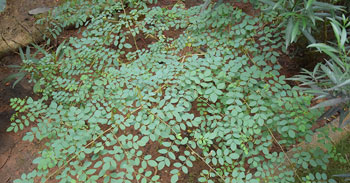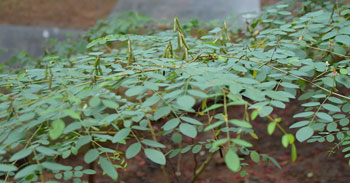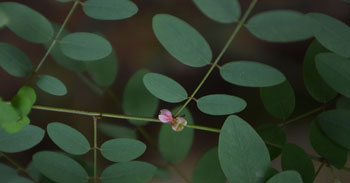KJC Medicinal Garden
Anjoora neeli
Indigofera racemosa
Order: Fabales
Family: Fabaceae
Genus: Indigofera
Species: L. Indigofera tinctoria
Common Names: : Neelayamari
Native to: Kerala, Andhra Pradesh,East tropical Africa
Other plants of the same genus with medicinal properties
-
L.Indigofera tinctoria
Indigofera argentea
Indigofera comgesta
Indigofera colutea
- The majority of the plants are shrubs; however others are small trees or herbaceous
- In the leaf axils, pinnate leaves with red racemes of flowers bloom.
- The fruit is a legume pod that comes in a variety of sizes and shapes
Uses in Tradition systems of medicine
- The entire plant is used in India to cure oral hygiene and menstruation cramps
- Diabetes and hypercholesterolemia are treated using the leaves and bark
- Kidney stones and sedatives are treated with the flower and leaves
- Ringworm, cutaneous mycosis, and abdominal pain are all treated with roots
- Vitamin E
- Vitamin A
- Vitamin C
- Iron, Calcium, Fibers
Suggested Medicinal Properties
- Antifertility
- Liver diseases
- Hepatitis
- Mental illness
- Leprosy,malaria,tuberculosis
- Wounds healing, wounds infection, swelling on body
- Scabies, toothache, Jaw swelling
- Neurological disorders
- Gastrointestinal disorders, Leg wound
- Psoriasis
- Snake bites and snake related diseases.
- Asthma
- Rheumatism, gonorrhea.
Active Phytochemicals
1. Flavonoid compounds isolated from the Indigofera species; among the reported compounds, (1- 29) are flavonoids isolated mainly from I. hebepetala, I. arrecta, I. pseudotinctoria, I. suffruticosa, I. hetrantha wall, I. tinctoria, I. zollingeriana miq, I. hebepetala benth and I. kirilowi.
2. Nitro group containing compounds; which included compounds (30-34) were isolated from I. linnaei, I. endecaphylla, I. Suffruticosa, I. spicata and I. endecaphylla.
3. Amide;among the reported compounds (35-37) were isolated from I. pseudomonas, I. tinctoria, I. spicata and I. endecaphylla
4. Steroidal compounds; which included compound (38-42) were isolated from I. pseudotinctoria and I. kirilowi.
5. Keto compounds; which further included compounds (43-45) containing keto group were isolated from I. pseudotinctoria and I. longeracemosa
References
Upadhyay B, Parveen, Dhaker AK, Kumar A. Ethnomedicinal and ethnopharmaco-statistical studies of Eastern Rajasthan, India. J Ethnopharmacol. 2010;129(1):64-86. doi: 10.1016/j.jep.2010.02.026
Vasquez, Julieta & Alarcón, Juan & Jiménez, Silvia & Jaramillo, Gloria & Gómez, Isabel & Rey-Suárez, Paola & Jaramillo, Karen & Muñoz, Diana & Marín, Daniela & Romero, Jefferson. (2015). Main plants used in traditional medicine for the treatment of snake bites in the regions of the department of Antioquia, Colombia. Journal of ethnopharmacology. 170. 10.1016/j.jep.2015.04.059


